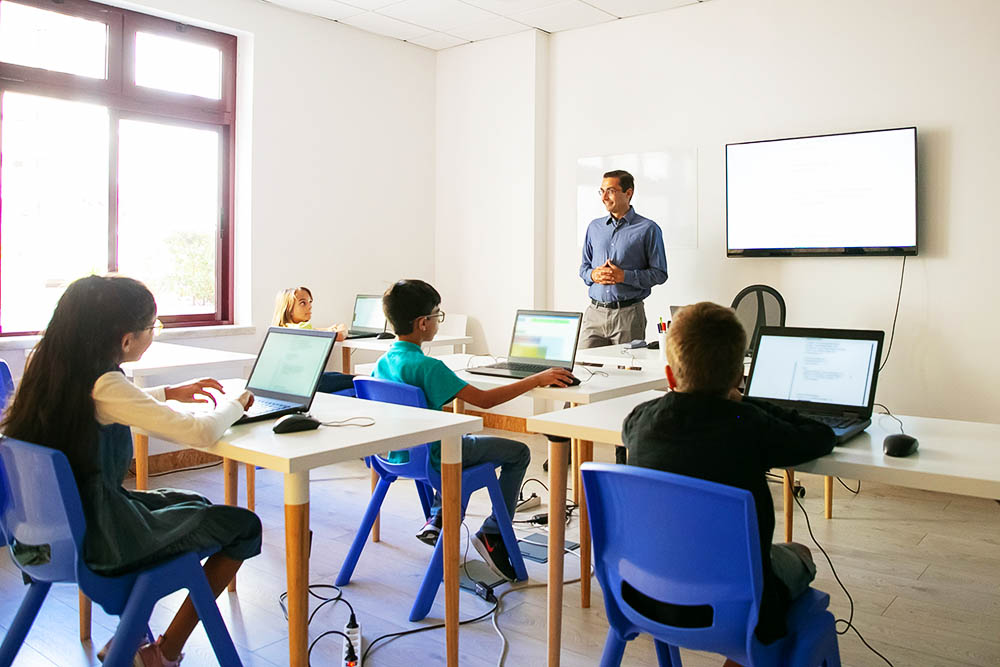Why Educational Technology is the Future of Education
Over the past decade or so, we have witnessed a rapid change in the world of education. The traditional ways of learning have been replaced by modern and innovative approaches. With the introduction of educational technology, learning has become more engaging, interactive, and accessible. The combination of technology and education has led to a revolution in the way we learn, and it is the future of education.
What is Educational Technology?
Educational technology is a combination of hardware, software, and digital resources that enhance the teaching and learning experience. It includes tools like Smartboards, online platforms, software applications, digital textbooks, and educational games. These tools allow for interactive and collaborative learning and provide students with the flexibility to learn at their own pace.
The Benefits of Educational Technology
There are numerous benefits to educational technology. One of the most significant benefits is the ability to personalize learning. Students can now access a variety of resources and learning materials, which cater to their learning style and needs. Educational technology has also made learning more interactive and engaging, which increases student motivation and participation.
Another benefit of educational technology is the ability to connect students with experts from around the world. Students can collaborate with peers from different countries and cultures, which promotes diversity and global awareness. Educational technology also provides students with access to up-to-date information and resources, which can enhance their knowledge and understanding of a topic.
Revolutionizing the Classroom
Educational technology has revolutionized the classroom by providing teachers with the tools to create a dynamic and engaging learning environment. Teachers can now use technology to create interactive lessons and activities that encourage student participation and collaboration. Smartboards and online tools allow for real-time feedback on student progress, which helps teachers to identify areas where students may need additional support.
Educational technology has also made it possible for teachers to differentiate instruction. Teachers can now create individualized learning plans for students based on their strengths, weaknesses, and learning style. This approach allows for personalized learning, which can lead to better academic outcomes.
The Role of Online Platforms in Learning
Online platforms have become an integral part of learning, especially during the COVID-19 pandemic. These platforms provide an opportunity for remote learning and allow for continuous and uninterrupted learning. Online platforms also allow for collaboration and communication between teachers and students, which can help to maintain a sense of community and engagement.
One of the most significant benefits of online platforms is the ability to track student progress. Teachers can monitor student progress in real-time and identify areas where students may need additional support. Online platforms also provide students with access to a variety of digital resources, which can enhance their knowledge and understanding of a topic.
The Future of Educational Technology
The future of educational technology is exciting and holds great promise. Advancements in technology will continue to shape the way we learn and teach. Some of the upcoming technological advancements in education include artificial intelligence, virtual and augmented reality, and gamification.
Artificial intelligence (AI) can help to personalize learning further. AI algorithms can analyze student learning patterns and provide personalized recommendations for learning materials and activities. Virtual and augmented reality can create immersive learning experiences, which can enhance student engagement and understanding of a topic.
Gamification is another area that holds promise for educational technology. Gamification uses game design principles and mechanics to create a fun and engaging learning experience. This approach can increase student motivation and participation and can lead to better academic outcomes.
Tips for Successful Implementation of Educational Technology
The successful implementation of educational technology requires proper planning and execution. Here are some tips for successful implementation:
1. Start Small: Begin by introducing small changes and tools into the classroom. This approach allows for testing and evaluation of the effectiveness of the tool or approach.
2. Provide Professional Development: Teachers need professional development and training to effectively use educational technology. Provide teachers with training, support, and resources to properly integrate technology into the classroom.
3. Involve Students in the Process: Involve students in the implementation process. Students can provide feedback and insight into how technology can best enhance their learning experience.
4. Evaluate Effectiveness: Continuously evaluate the effectiveness of educational technology tools and approaches. This approach allows for adjustments and improvements to be made.
Conclusion
Educational technology is the future of education, and it has revolutionized the way we learn and teach. The combination of technology and education has led to an engaging, interactive, and personalized learning experience. The successful implementation of educational technology requires proper planning, execution, and evaluation. With continued advancements in technology, the future of educational technology is exciting and full of promise.
